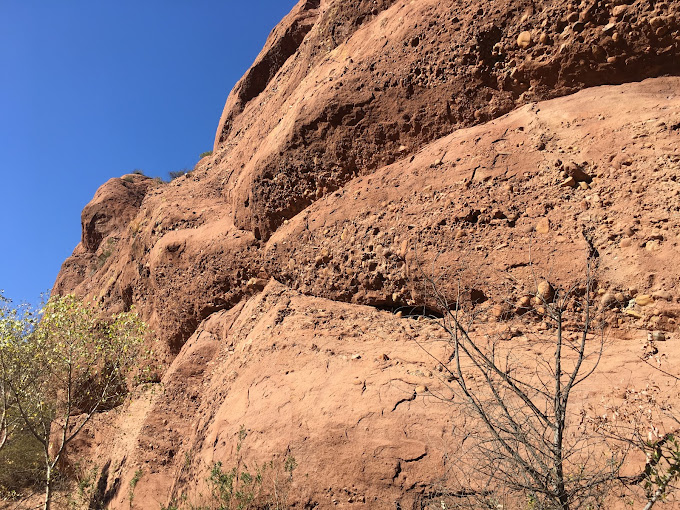Red Rock Canyon is a unique destination that offers incredible scenery and experiences for every type of traveler. Located in the heart of the Santa Monica Mountains off of Old Topanga Canyon Road, Red Rock Canyon Park is a special destination that is sure to impress. From red sandstone outcroppings reminiscent of Southwest canyons and gorges to miles of hiking trails, rock climbing, and more, there is something for everyone at Red Rock Canyon!
Things to Do at Red Rock Canyon Park and Beyond
Visitors to Red Rock Canyon Park can experience a 13-mile scenic drive, hike the many trails, enjoy a picnic, and even enjoy a variety of different activities like rock climbing, horseback riding, mountain biking, road biking, and more. To further explore the area, just minutes away from Red Rock Park you can visit the Red Rock Canyon National Conservation Area, where visitors can experience an additional 13-mile scenic drive, miles of hiking trails, enjoy plants and wildlife, and so much more.
Red Rock Canyon Visitors Center and Campground
For those interested in exploring Red Rock Canyon further, the Visitors Center offers information and interpretation about recreation opportunities, including indoor and outdoor exhibits and a book and gift store. Additionally, the nearby Red Rock Canyon Campground offers standard, RV, and group campsites, where visitors of all ages can enjoy the unique Mojave Desert environment.
Permit Information and Fees at Red Rock Canyon
For those interested in purchasing an annual or lifetime pass during their visit, the option is available under the "Add a pass" drop-down menu. Additionally, the park is currently working to update the permit process to make it easier and more accessible for visitors and anticipates that permit reservations will be available online through www.recreation.gov by late winter. In general, the current fees for entry into Red Rock Canyon are $15 per vehicle for a one-day entry.
California's Red Rock Canyon State Park
California also offers a Red Rock Canyon State Park, which is located just west of Las Vegas. This park is home to a variety of wildlife, plants, and geological formations, as well as camping and cultural resources. A Preliminary General Plan and Draft Environmental Impact Report are currently circulating for public review and comment, with a review period that has been extended to December 16, 2022.
Conclusion
Red Rock Canyon Park is a perfect destination for all types of travelers, whether they are looking for a unique outdoor experience or a scenic drive to admire the unique red sandstone outcroppings. With miles of hiking trails, wildlife and plants to observe, rock climbing, camping, and cultural resources available, Red Rock Canyon is sure to provide an unforgettable experience!

Comments
Post a Comment